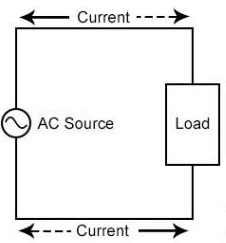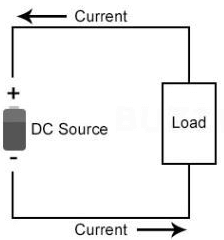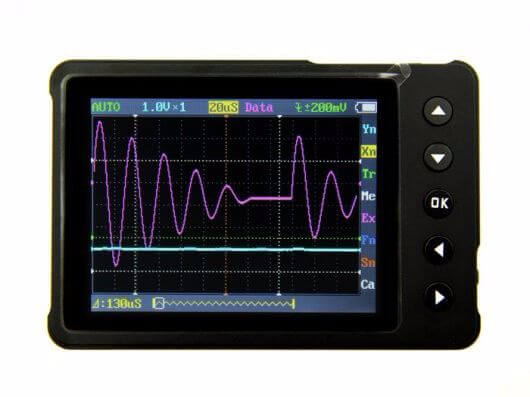Alternating Current (AC) vs Direct Current (DC), the guide for you
Ever wondered what currents are running through your wires? This guide will walk you through the two kinds of current electricity: Alternating Current (AC) and Direct Current (DC).
In this guide, I’ll be covering the essentials ranging from:
- What are AC and DC
- Differences between AC and DC
- Advantages & Disadvantages of AC and DC
- Why are there AC and DC
- Converting AC to DC
- Whether to use AC or DC
- Applications of AC and DC
- Why do we need to monitor AC and DC
- Coupling with AC and DC
AC vs DC
Alternating Current (AC)
- A form of current that changes direction periodically, oscillating back and forth
Direct Current (DC)
- A form of current that only flows in one direction, providing a constant voltage/current
What are the differences?
| AC | DC | |
| Waveformproduced | Most commonly produces sine waves | Constant voltage/current tends to produce horizontal waveforms |
| Generated by | Alternator, an electrical generator designed to produce AC | Commutator Rectifier, converts AC to DC Batteries, through generation from an internal chemical reaction |
| Suitability for long-distance transmission | Suitable, transmission loss is small | Less suitable, transmission loss is bigger unless it’s high enough in voltage |
| Usages | Less suitable for electronic products unless power is switched into DC through a rectifier | Suitable for electronic products |
| Safety Level | Lower safety level Alternating voltages can cause current to enter the human body without a closed loop | Higher safety level Commonly found DC currents in electrical appliances tend to be safer |
Advantages
AC
- Less power loss at high voltages
- Easy to transform
- Easier and cheaper to convert to DC
- Easy to shut down while power is flowing
- No need to worry about positive and negative voltage
- Generation, repair, and maintenance are cheaper
DC
- No advance/delay in circuit
- No reactive power generated
- Can store electricity
- Requires less conductor and insulation material
- Lower resistance
Disadvantages
AC
- Requires higher voltage than the target voltage
- Affected by coils and capacitors
- Not suitable for ultra-long-distance transmission
- More dangerous at high voltages
- More complicated construction
- Continuous power loss in transmission line
DC
- Difficult current interruption
- Difficult voltage conversion
- Strong electrolytic effect
- Electric power cannot be generated at high voltage due to commutation problems
Why are there AC and DC?
Currently, AC dominates the electrical market, but that does not mean it is better per se compared to DC. DC is also very important in our everyday lives. Looking at the definitions, differences, advantages, and disadvantages, we can understand more about why we need both AC and DC to feed our electrical needs in this world.
To put it in simpler terms, the laptop that you are using to read this article right now requires both AC and DC. The nozzle part of ur charger delivered DC to your laptop, but it receives that charge from the AC plug on ur wall. The big block that is in the middle of the nozzle and power socket is the converter that transforms AC to DC, which will be explained more in the following point.
Converting AC to DC?
Although AC and DC operate differently, they need not be operating as a standalone circuit due to the availability of an AC-DC converter.
The converter is called a rectifier, where it transforms AC input into DC output by reversing the directional flow of current.
AC vs DC, which should you use?
Long Distance Power Transmission:
AC: The ability to ramp up voltages through transformers results in lesser resistance in the wires which can provide efficient transmission of long-distance power
DC: High difficulty and cost to efficiently create high-voltage DC
Winner: AC, the one that does the job if you’re looking to transmit power over a long distance
Ease of Usage/Simplicity:
AC: Simple to operate through the usage of wires and transformers for voltage adjustments
DC: Unable to conveniently convert voltages due to requiring complicated circuits
Winner: AC, the convenience and flexibility that it’s able to bring unravels its opposition.
Compatibility with electronics:
AC: Less compatible with electronics due to the directional changes of current
DC: More compatible with electronics as current flows reliably in one direction
Winner: DC, the solution to power your electronics.
Applications of AC and DC
AC

Delivers power to:
Houses, Offices, Electric Motors, Generators
DC

Delivers power to:
Electrical Appliances; Cell Phones, TV, electric vehicles, etc.
Lauren. (2017, July 17). AC and DC electricity made simple.
Why do we need to monitor AC and DC?
- Indicate overcurrent alarm conditions (turn off equipment before overloads)
- Determine load characteristics by monitoring the sourced current
- Monitor a phase of power for debugging, data logging, or both
- Predict the lifetime for equipment due to resistance changing over time
- Measure current in AC power circuit
- Notify personnel and control center in the event of an equipment jam (low current)
- Monitor battery charging for DC
Coupling: AC and DC
AC and DC can also be referred to as Alternating (Capacitive) Coupling and Direct Coupling. Coupling allows you to observe the voltages and wavelengths of the power supply. Each form of coupling will result in differing results in data when plugged into an oscilloscope.
AC Coupling vs DC Coupling
| AC Coupling | DC Coupling |
|---|---|
| Only show and allow AC signals to pass through a connection | Allows for both AC and DC signals to pass through a connection |
| Suitable for the following sensors: – ICP Microphones – ICP Accelerometers – Strain Gauges (Elastic/Dynamic behavior only) – ALL ICP/IEPE transducers | Suitable for the following sensors: – Thermocouples – DC Accelerometer – Strain Gauges |
Start coupling with:
DSO Nano V3: A portable DC coupling capable oscilloscope for voltage measurements

The DSO Nano V3 is a simple-to-use and compact oscilloscope that meets the basic demands of users ranging from school lab tests, electric engineering, etc.
Product Features:
- Portable and lightweight
- Color display
- Waveform storage and playback
- 6 triggering modes
- 200Khz Analog Bandwidth
- Complete measurement markers and signal characteristics
- Built-in Signal Generator
- Accessories available
- Open Source
Summary
Choosing between using DC and AC comes down to the purpose and requirements of your project. DC is recommended for powering electronic devices due to the nature of batteries being powered by DC current. On the other hand, the ease with which AC voltages can be modulated is still unmatched. With that said, both currents are excellent in their area field and it solely comes down to the user application in picking the right one.